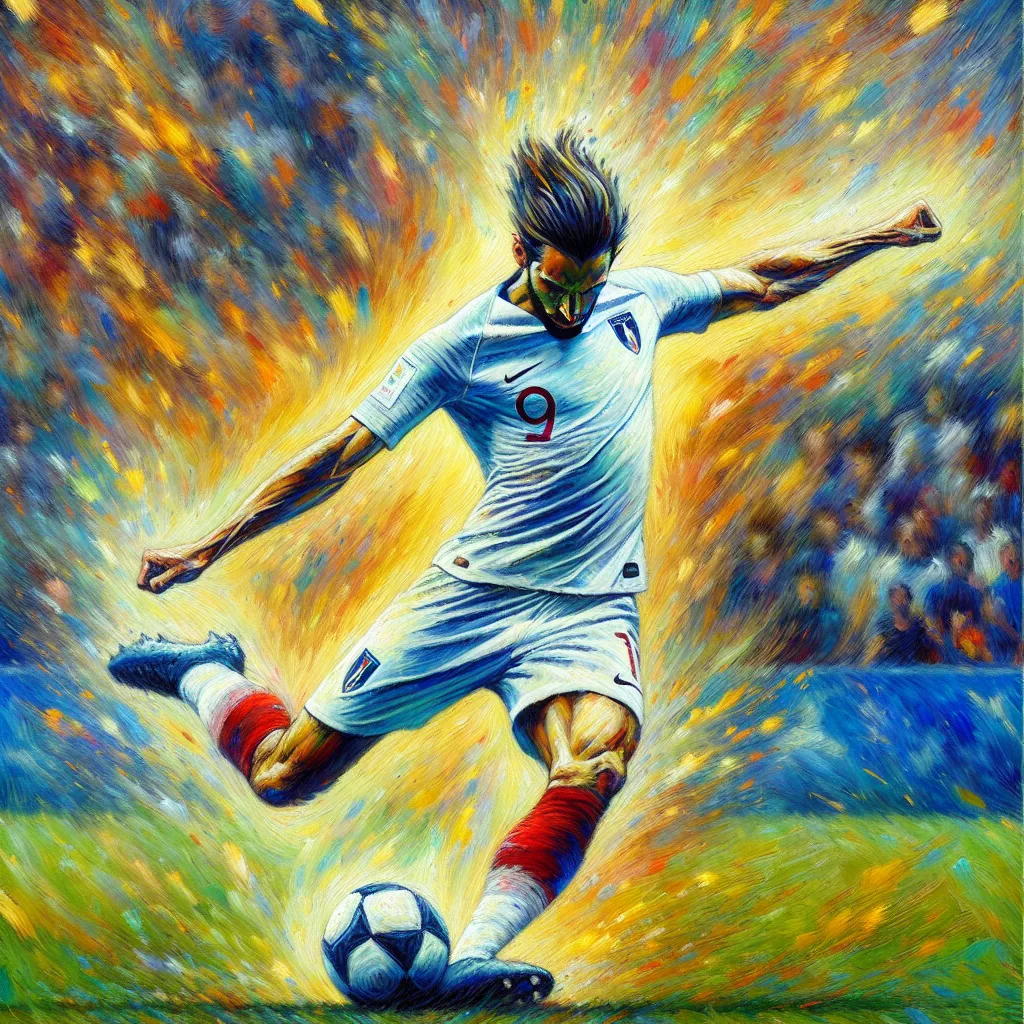
- Published on
- Authors

- Name
- Sports Tips
Powerful Free Kicks: Generating Pace and Accuracy
Mastering the art of the free kick can be a game-changer on the soccer field. Whether you’re striving for David Beckham’s precision or Ronaldo's power, understanding and perfecting your technique is crucial. This article breaks down the key components for executing a powerful and accurate free kick, focusing on run-up, striking technique, and body mechanics.
The Run-Up
The importance of the run-up cannot be overstated. It sets the stage for the perfect strike.
Steps to a Successful Run-Up
Positioning:
- Stand about 3-5 steps behind the ball at a slight angle.
- Your stance should be relaxed yet ready, akin to winding a spring.
Angle:
- Approach the ball from a 30-45 degree angle, which helps generate maximum force and spin.
Speed:
- Maintain a balance between speed and control in your run-up.
- A gradual acceleration can lead to a more powerful strike.
Example Run-Up Technique
| Step | Description |
|---|---|
| 1 | Measure 3-5 Steps Back |
| 2 | Align Your Body at 30-45 Degrees |
| 3 | Controlled, Gradual Acceleration |
Striking Technique
With your run-up setting you in motion, the striking technique ensures the pace and accuracy of your kick.
Key Elements of Striking
Plant Foot:
- Place your non-kicking foot next to the ball, pointing towards your target.
- Your foot should be stable with slight bend in the knee for balance.
Contact Point:
- Strike the ball with the knuckle part of your foot for a solid, impactful hit.
- Aim for the center of the ball to keep it low and powerful.
Follow-Through:
- Ensure a smooth follow-through to maintain the power generated.
- Your kicking leg should follow the ball's trajectory upwards.
Example Striking Technique
| Element | Description |
|---|---|
| Plant Foot | Next to the Ball, Pointing at Target |
| Contact Point | Knuckle of Foot to Ball's Center |
| Follow-Through | Smooth and Consistent |
Body Mechanics
Your body mechanics play a crucial role in transferring energy efficiently and maintaining balance.
Tips for Optimal Mechanics
Posture:
- Maintain an upright posture during the run-up and strike.
- Lean slightly forward to keep the ball low.
Hip Rotation:
- Use your hips to generate torque and power.
- Proper rotation allows for more impactful contact.
Arm Positioning:
- Use your arms for balance; they should be slightly raised.
- Correct arm positioning helps regulate your body’s movement and stability.
Example Body Mechanics Tips
| Aspect | Tip |
|---|---|
| Posture | Slight Forward Lean |
| Hip Rotation | Maximized Torque |
| Arm Positioning | For Balance and Control |
Practice Drills
To perfect your free kick, incorporate the following drills into your training regimen:
Wall Practice:
- Set up a wall or use training mannequins to replicate defenders.
- Focus on getting the ball over the wall and on target.
Spot Kicking:
- Place cones at various targets within the goal.
- Aim to hit these targets with each kick, ensuring both pace and accuracy.
Power Drills:
- Use weighted balls to strengthen your leg muscles.
- Incorporate sprint and strike exercises to mimic match conditions.
Example Practice Drills
| Drill | Focus |
|---|---|
| Wall Practice | Accuracy Over Obstacles |
| Spot Kicking | Precision Targeting |
| Power Drills | Strength and Execution |
Conclusion
Executing a powerful and accurate free kick is a challenging yet rewarding skill. By focusing on the details of your run-up, striking technique, and body mechanics, and consistently practicing, you can transform your free kick into a formidable weapon on the field.
Remember, even the best free-kickers continually refine their technique. Keep practicing, stay dedicated, and watch as your free kicks start to find the back of the net with impressive consistency!
